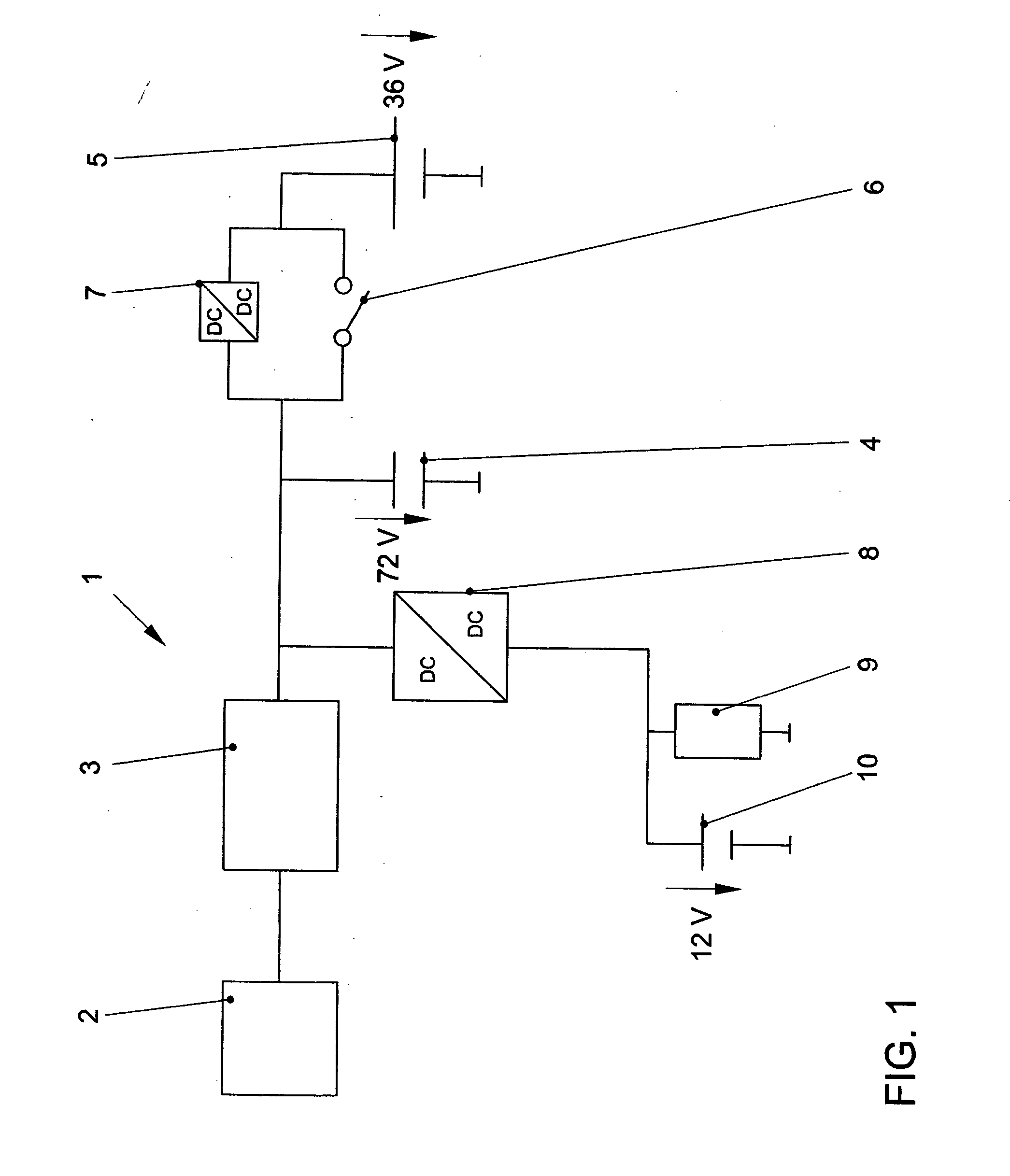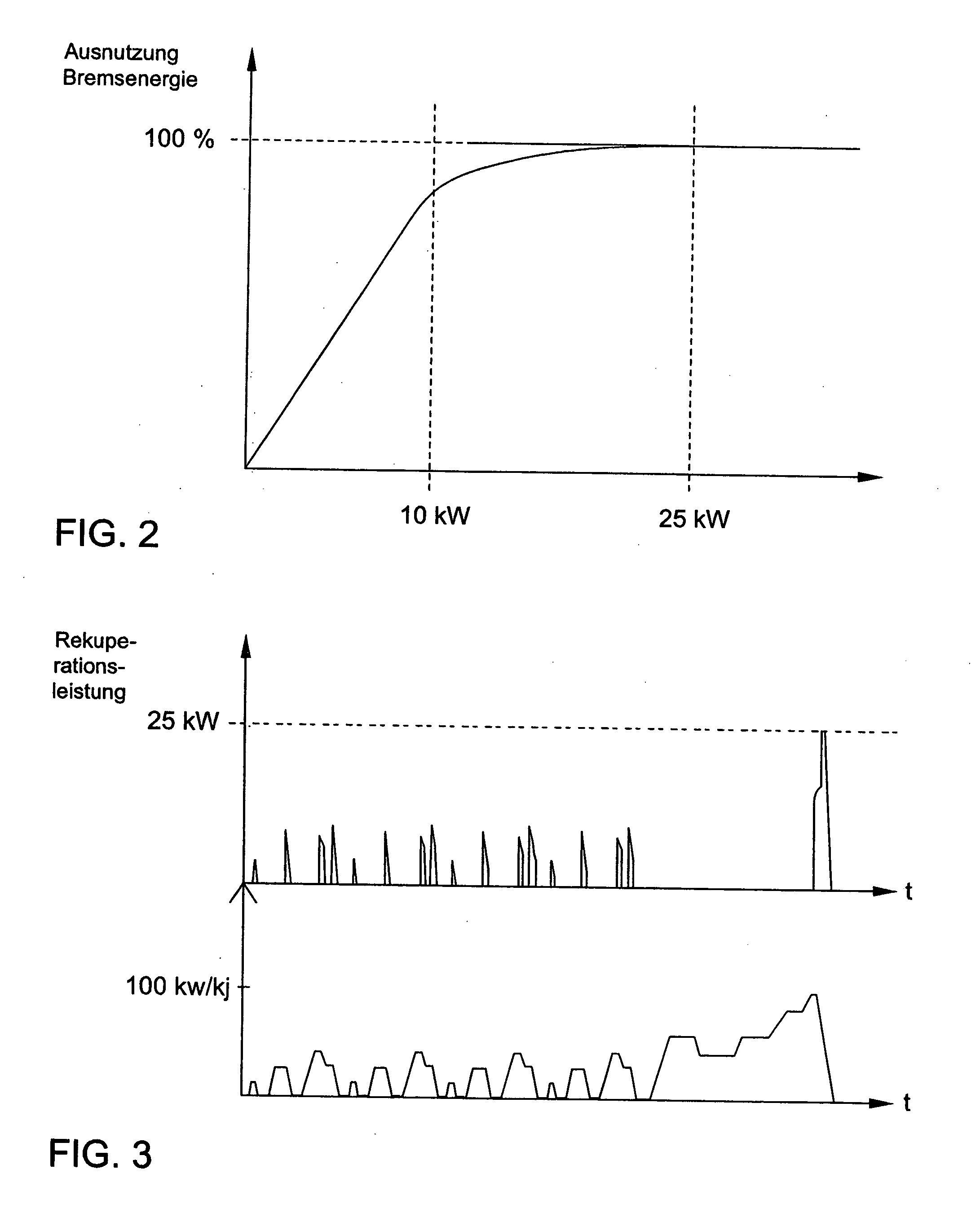Electrical energy system in a hybrid car
a hybrid car and electric energy technology, applied in hybrid vehicles, electric propulsion mounting, battery/fuel cell control arrangement, etc., can solve the problems of affecting the overall efficiency of the power train, and less energy available from these phases for electrical motor propulsion, etc., to achieve optimal absorbable recovered energy
- Summary
- Abstract
- Description
- Claims
- Application Information
AI Technical Summary
Benefits of technology
Problems solved by technology
Method used
Image
Examples
Embodiment Construction
[0032]FIG. 1 shows the electrical energy system 1 in a hybrid car with an internal combustion engine 2. The electrical energy system 1 includes an electrical motor 3, a capacitor 4, a battery 5, a switch 6, a first DC / DC converter 7, a second DC / DC converter 8, a power supply user 9 and a power supply battery 10.
[0033] The internal combustion engine 2 is designed, by way of an example, as a direct-injection, lean-mixture diesel engine and is connected to the electrical motor 3 firmly or via a detachable clutch. The electrical motor 3 is designed for example as a crankshaft starter generator and can be operated mechanically and also dynamically. Mechanically the electrical motor 3 can start the internal combustion engine 2 and can mechanically support it (boost operation). Dynamically the electrical motor 3 can be driven by a gear, not shown, via the internal combustion engine 2 or via recovery. The rated voltage of the capacitor 4, designed preferably as a double-layer capacitor, i...
PUM
 Login to View More
Login to View More Abstract
Description
Claims
Application Information
 Login to View More
Login to View More - R&D
- Intellectual Property
- Life Sciences
- Materials
- Tech Scout
- Unparalleled Data Quality
- Higher Quality Content
- 60% Fewer Hallucinations
Browse by: Latest US Patents, China's latest patents, Technical Efficacy Thesaurus, Application Domain, Technology Topic, Popular Technical Reports.
© 2025 PatSnap. All rights reserved.Legal|Privacy policy|Modern Slavery Act Transparency Statement|Sitemap|About US| Contact US: help@patsnap.com



